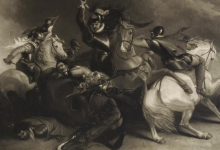The Battle of Pampa Grande (1933) in the Context of the Chaco War
The Battle of Pampa Grande, fought in 1933 during the Chaco War, remains a key event in the broader conflict between Paraguay and Bolivia. The war, which unfolded from 1932 to 1935, was primarily driven by territorial disputes over the Chaco Boreal region, an area believed to be rich in natural resources. Despite the strategic significance of the region, the battle at Pampa Grande was one of the lesser-known engagements that nevertheless marked an important milestone in Paraguay’s victory.
Context of the Chaco War
The Chaco War, a devastating and prolonged conflict, arose due to competing claims over the Chaco Boreal, a largely uninhabited region that both Bolivia and Paraguay wanted to control. The area had significant economic importance because of its potential oil reserves, which made it a coveted prize for both nations. Bolivia, a landlocked country, had long been attempting to secure access to the Atlantic Ocean and viewed the Chaco as a potential gateway to the sea. Paraguay, on the other hand, considered the region a vital part of its territorial integrity and economic interests. These conflicting goals led to a war that saw brutal clashes over the course of several years.
The Battle of Pampa Grande
The Battle of Pampa Grande took place in 1933, during the mid-phase of the Chaco War. It was one of many engagements that contributed to the eventual Paraguayan victory. The battle was significant not because of its large-scale confrontation but because it represented the growing momentum of Paraguay’s success against a superior Bolivian military force.
In terms of military strategy, the battle involved land-based combat between the Bolivian and Paraguayan forces. The Bolivians were well-equipped and had greater numbers, but the Paraguayan forces, although numerically inferior, were better adapted to the harsh and challenging environment of the Chaco. The weather conditions, the difficult terrain, and the tactics employed by both sides played a crucial role in shaping the outcome of the battle.
Paraguay emerged victorious in the Battle of Pampa Grande. This victory, while not a decisive turning point in the war, boosted Paraguayan morale and demonstrated the resilience and effectiveness of its military forces. The defeat for Bolivia was yet another blow in a series of setbacks throughout the Chaco War, highlighting the challenges faced by the Bolivian forces in this rugged and unforgiving landscape.
The Outcome and Implications for the Chaco War
The Battle of Pampa Grande, while relatively minor in comparison to other larger engagements of the Chaco War, nonetheless contributed to the overall outcome of the conflict. The victory was part of the broader trend of success for Paraguay, which would eventually lead to Bolivia’s defeat in 1935. The Chaco War officially ended with the signing of the peace treaty on June 12, 1935, although sporadic skirmishes had continued after the formal end of hostilities.
The significance of the Battle of Pampa Grande was not solely in its military impact but also in the psychological effect it had on both sides. For Paraguay, the battle demonstrated the effectiveness of their strategy and the tenacity of their troops, instilling confidence as they pressed on toward victory. For Bolivia, the battle was a painful reminder of the difficulties they faced in their pursuit of control over the Chaco. Despite their initial advantage in resources and equipment, Bolivia could not overcome the Paraguayan determination and strategic prowess.
Lessons Learned from Pampa Grande
The Battle of Pampa Grande serves as a microcosm of the Chaco War itself, highlighting several important lessons in military strategy and tactics. One key lesson is the significance of environmental adaptation in warfare. The Chaco region’s hot, dry, and desolate landscape proved to be a critical factor in shaping the course of the battle. Paraguay’s forces, better adapted to the conditions of the Chaco, were able to exploit their knowledge of the terrain and weather to gain an advantage over the Bolivians, who were less familiar with the harsh environment.
Another important lesson from the battle is the impact of morale on combat outcomes. The Paraguayans, despite being outnumbered and less well-equipped, were able to draw strength from their unwavering commitment to defending their homeland. This sense of national pride and determination proved to be a decisive factor in many engagements throughout the Chaco War, including the Battle of Pampa Grande.
Conclusion
The Battle of Pampa Grande may not have been the most significant or well-known engagement of the Chaco War, but it played an important role in the broader context of the conflict. The Paraguayan victory at Pampa Grande demonstrated the resilience and adaptability of its forces and contributed to the eventual success of Paraguay in the war. The battle stands as a testament to the enduring importance of terrain, morale, and strategy in shaping the outcomes of military conflicts, especially in the context of the harsh and unforgiving Chaco region. As such, it remains an integral part of the history of the Chaco War and Paraguay’s triumph over Bolivia.

